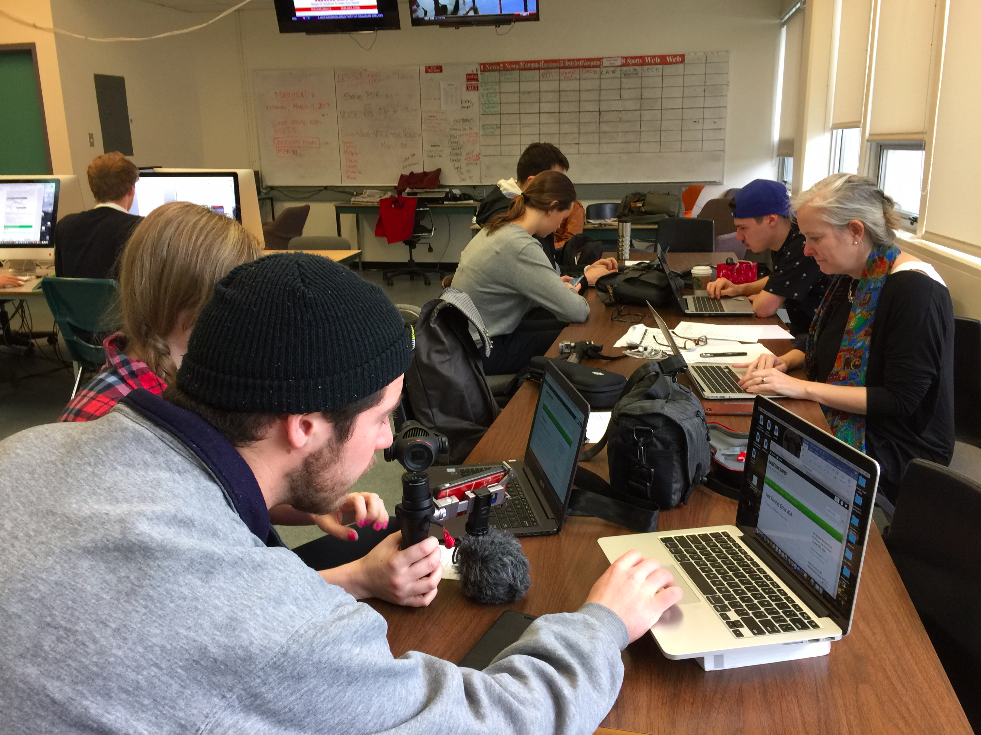
Behind the story – COVID-19 has changed how news is produced
The journalism industry has had to adapt to the pandemic. We are inviting our readers to find out why.
By Patrick Wachter
Since the COVID-19 pandemic swept around the globe — shutting down economies, overloading health systems and halting travel — news outlets around the world have worked tirelessly to provide the public with the latest and most accurate information.
The Voice, produced by Langara students, has done its best to keep its readers up-to-date with the latest developments affecting the college’s students, faculty staff and administration.
The entire journalism industry has had to adapt to the COVID-19 pandemic. This has not been without its challenges — our readers may have noticed a difference in our coverage.
We want to invite our readers inside our newsroom to demonstrate why and how our coverage has perhaps changed, what have been the greatest obstacles facing news outlets at this time and how we’ve endeavoured to overcome these challenges to bring you the very best coverage possible.
Pandemic changed how journalists pitch and produce stories
CTV News journalist Jon Woodward, who taught investigative reporting at Langara in the fall, now produces news for broadcast television in Toronto.
He said the pandemic accelerated the push for CTV News journalists to record and edit their own stories. It also changed the way he pitched story ideas. Unable to see each other in person, “the job became more self-driven.”
“Without the ability to converse at the news station for pitches, we now are sending emails to our producers,” he said. “Creating news stories is a team effort, and the ability to not to do in-person interactions is tough.”
Similarly, for journalism students, one of the biggest changes since the college moved to remote learning was the fact everyone who produced The Voice had to work apart instead of together in our campus newsroom.
This abrupt change of communicating through Zoom brought additional challenges as student reporters are traditionally never at the top of most sources’ priorities. Many sources have also been reluctant to meet in person for safety reasons.

Safety concerns had a big impact on story ideas and sources
Rui Yang Xu, a second-year journalism diploma student, experienced what it was like producing stories for The Voice both before and during the pandemic.
“The stress of trying to find people based in South Vancouver agreeing to be interviewed was an incredible challenge,” Xu said. “At times, it felt that the ability to think of creative story ideas was put on hiatus due to COVID becoming the centre of attention.”
Added to that, safety concerns at group events, such as protests, had to be weighed, depending on the restrictions at the time, set by the provincial health officer. Taking photos and video was often a challenge for the same reasons and journalism students often had to think “creatively.”
Erica Bulman, the faculty managing editor of The Voice since 2014, said the COVID-19 pandemic forced her and the other Voice faculty to quickly come up with a way to continue to produce the publication in a brand new way.
“The main challenge of the pandemic was figuring out how to manage a group of new student reporters in a remote environment and continue to be available for students at a moment’s notice,” she said, adding that the class had to start using multiple platforms to communicate.
Watch the video below to hear Jon Woodward and Erica Bulman talk about their experiences:

Comments are closed.